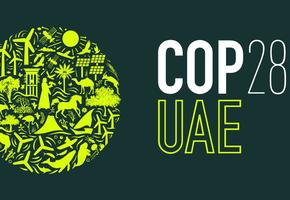The biggest threats to climate action often aren’t only climbing emissions or government policy, but misconceptions about what it really means. Perhaps one of the worst misconceptions is the idea that there’s some kind of binary choice between development and protecting our planet. It’s an idea that has continually held back the ambition we need to arrest the climate crisis.
But where has this idea come from? And why must successful development be environmentally destructive? The answer is that it doesn’t need to be, which we are seeing through the growth of renewable energy systems that can provide affordable energy for even the poorest people: supporting health, work and education.
More importantly though, it can’t continue to be so destructive. Economic growth in the modern world is built on natural resource use. That means it’s borrowed growth, because when the natural resource is gone then so too is the growth that came with it.
Meeting the UN's Sustainable Development Goals
The creation of the Sustainable Development Goals (SDGs) recognised the interdependence of growth and maintaining a healthy environment. In combining issues from poverty reduction to women’s rights, health, oceans and climate change, the Goals look at the Earth system as a whole and show how they relate to one another.
However, the Goals have seen mixed results, with only 16% of targets on track to be achieved by 2030. Some of the remaining targets have even seen progress reverse, all while we grapple with regular heatwaves, devastating flooding and an increase in global inequality. Some of this is due to crises such as Covid-19 and international conflicts but there is a significant issue with lack of political commitment and targets that can be open to interpretation.
None of this means that we should give up on the spirit of the SDGs. The issues at their heart are among the most important we face, and each is crucial. This is why the UN Secretary-General, António Guterres, has called for a Rescue Plan for People and Planet to reignite ambition for the SDGs, including through reform of international financial architecture. With COP29 dubbed the ‘climate COP’, 2024 may be our best chance of achieving that.
Poverty and sustainability
After pledges for increased climate finance at COP28, it seems the world is waking up to the idea that climate action requires effective, targeted funding – not just to reduce emissions but to adapt to the changes that have already taken place. Many such changes are taking place in the poorest parts of the world, among those who have done the least to cause the crisis we’re in.
For the next fortnight, New York is playing host to the UN’s High-level Political Forum on Sustainable Development (HLPF). The key theme this year is ‘Reinforcing the 2030 Agenda and eradicating poverty in times of multiple crises: the effective delivery of sustainable, resilient and innovative solutions’. Participants will explore the “integrated, indivisible and interlinked nature of the Sustainable Development Goals” (UN, 2024), which includes a clear acknowledgement that the economy and economic development can’t be separated from climate and the environment.
One participant will be the government of Yucatán, Mexico: a long-standing member of the Under2 Coalition of states and regions. Their voice is important on many levels. Not only do they represent the concerns and needs of many Global South countries, but they show just why all levels of government need to be heard at international climate forums. The SDGs hinge on cooperation and shared experiences. Regional governments are often the first responders to the climate crisis, so they know where the biggest threats are and how they are being met on the ground by their communities.
Multilevel solutions to multi-layered crises
Knowing this, along with our international partners, we've been pushing for more state and regional involvement in the next round of Nationally Determined Contributions (NDCs): due to be announced ahead of COP30 in Brazil. This led to the announcement of the CHAMP initiative last December, with more than 70 national governments pledging to work with their countries’ local governments on climate solutions that work.
The SDGs show why such cooperation is crucial. Not only does every country have different priorities and concerns, but no national government can be truly across all the issues its regions face. At the same time, it’s clear that business-as-usual solutions aren’t going to be enough to meet the SDGs. We need innovation and creativity: new, adaptable solutions to meet unprecedented challenges.
From zero emission vehicles to sustainable ranching and climate finance policies, state and regional governments are already developing solutions. Of course they don’t always get it right first time, but in working together through coalitions as well as bilaterally, they are learning what works.
Developing sustainably
States like Yucatán show that development and climate action are by no means incompatible. Over the past decade, Yucatán has built a greenhouse gas inventory to identify its emissions sources, invested in renewable energy sources and rolled out an Urban Mobility Plan to make transport systems more sustainable. It’s also worked with businesses and NGOs to install solar panels in small, isolated communities and apply nature-based solutions to support rural farmers.
This shows that it’s possible to support people, fight poverty and tackle climate change at the same time – the headline message of the Sustainable Development Goals. As the international community looks again at the progress of SDGs and as we wait for the next round of NDC announcements, states such as Yucatán demonstrate the value of multi-layer and multi-partner solutions to even the toughest problems. The international community can learn a lot from their example.




